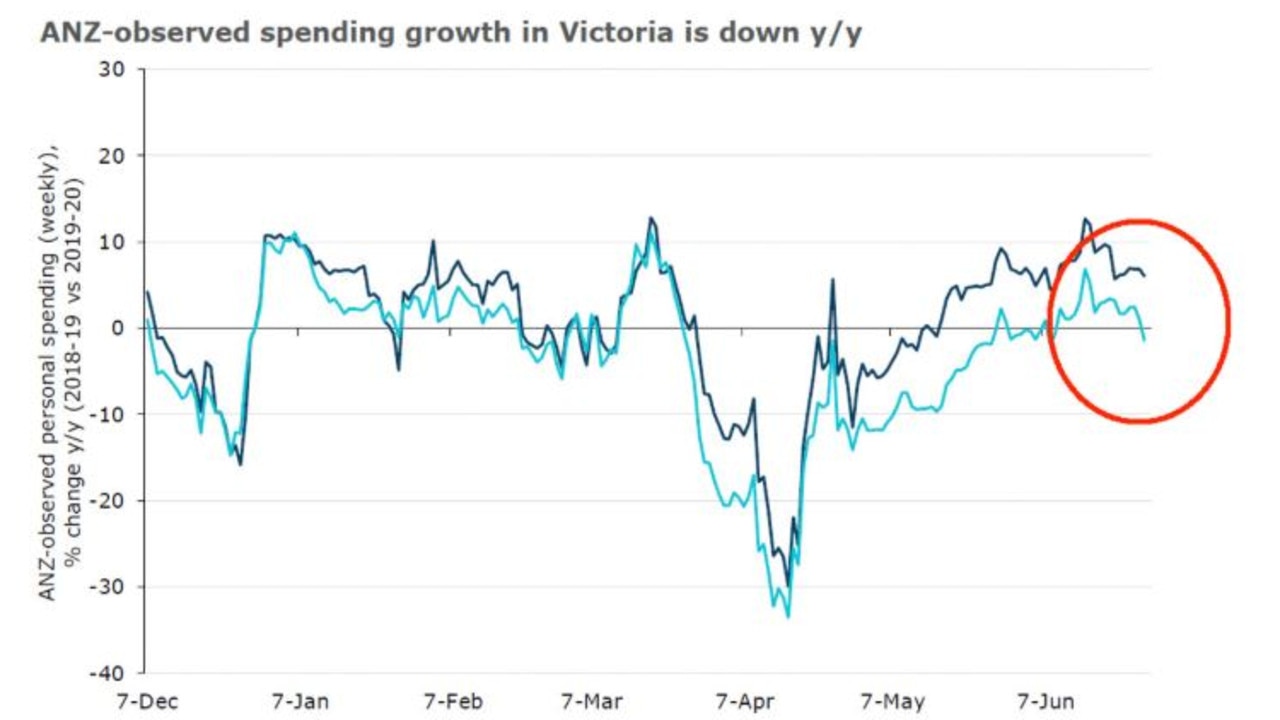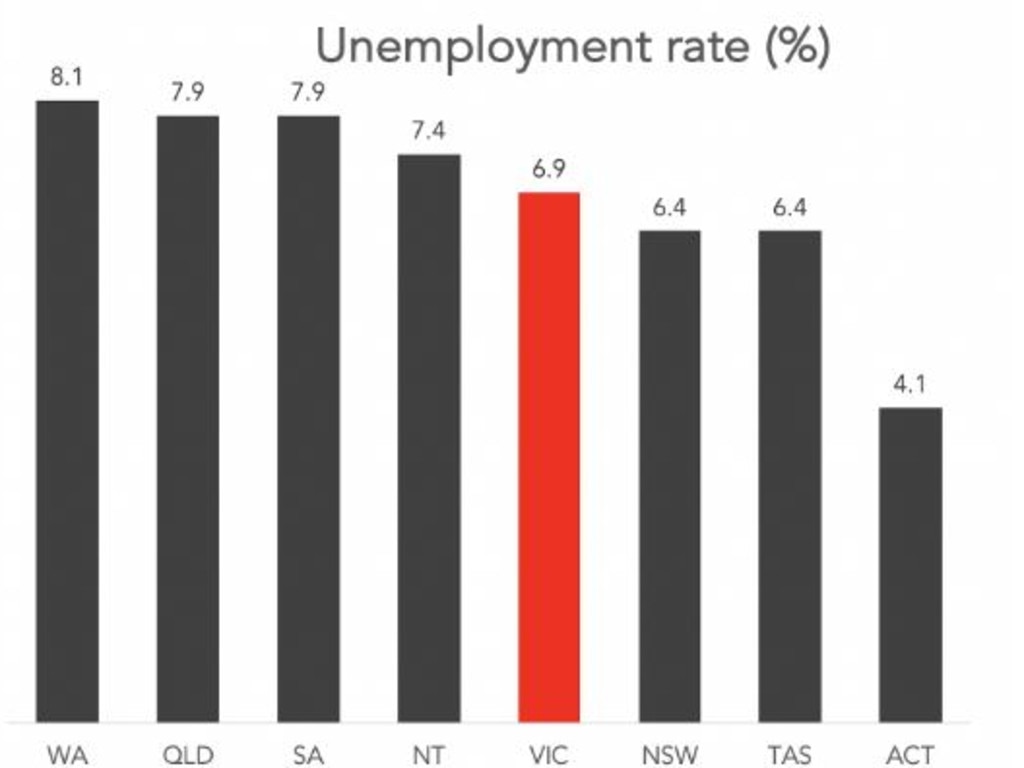Victoria lockdown: How coronavirus second wave will affect economy
As the state braces for tough lockdowns, a new chart from ANZ shows the devastating economic impact of a second wave of COVID-19.
Australia has moved heaven and earth to get the economy up from its coronavirus slump.
We have endured incredibly tough lockdowns. The government has unleashed unprecedented multi-billion dollar spending programs. We have been through complete upheaval. And it has worked. The virus is down and the economy is up.
But now a new chart shows just how fragile the economic recovery is. Victoria’s new coronavirus outbreaks show that just a handful of cases can spiral out of control and suppress the spending that keeps the economy moving.
“Health risks and lockdown conditions in VIC are delaying the spending recovery,” said ANZ economist Adelaide Timbrell.
Ms Timbrell shared the following chart, which shows how Victorians’ spending has shrunk. The chart uses ANZ data and reveals that in the rest of Australia, spending is still higher in 2020 than in 2019. In Victoria that was also true – until the most recent week. Now, with the coronavirus once again tearing through the lungs of hundreds of Victorian citizens, and the state responding with tough lockdowns, spending is shrinking again.
RELATED: Australia’s big dole myth busted
RELATED: Economic ‘bloodbath’ coming in 100 days

The chart shows the recent fall in spending is not nearly as large as the fall in March and April. (Neither is it as large as the fall in late December, caused by bushfires.) But it is a worrying signal of how rapidly the progress of the economy follows the virus.
If Victoria is unable to get on top of the virus, its economy is at risk. For now, as the next graph shows, the state can still claim its unemployment rate looks better than other states.
That relative success won’t last if the virus keeps trending upwards – and Victoria’s weakness will also weigh on other states.

The state government is working hard to suppress the viral outbreaks, bringing in tough new rules. Instead of locking down the whole state, or even the whole city of Melbourne, the lockdowns are focused on postcodes that have seen a high number of virus cases.
The new lockdowns are designed to keep as much of the economy unaffected as possible. Most of the state can continue to operate as normal, working, shopping and travelling around.
But will this work? One risk is it might not contain the virus properly. Viruses don’t respect postcode boundaries and the coronavirus may already be beyond the areas in lockdown. The other risk is that all Victorians react to the news of the viral spread and new lockdowns by reducing spending – even if the lockdowns don’t apply to them.
WHAT IF THE REASON IS WINTER?
The second wave in Victoria’s viral cases has come as the thermometer drops. Temperatures in Melbourne have been frosty in recent weeks, with minimums as low as two degrees Celsius.
This raises a question with global relevance. Will Asia, Europe and North America also see an upsurge in virus cases when winter returns?
Winter weather is not the only factor making the virus spread, but it makes suppression harder. It may be that the virus lasts longer in cold air, and low temperatures encourage people to huddle inside where transmission is more likely.
Take a population with a few residual infections, add some cold weather and viral spread can take off. The first wave of viral outbreaks happened in cold places (Wuhan, Northern Italy and New York) in midwinter.

Victoria’s uptick in cases could be a lesson for the world – lockdowns work tremendously in summer, but they need to be extremely strict in cold weather to get the same effect.
If this is the case, the current success in suppressing the virus in the northern hemisphere might be partially because of summer. Ninety per cent of the world’s population lives in the northern hemisphere and they could be facing a second wave by December.
If so, this has potentially disastrous implications for the global economy. The IMF has forecast that the global economy would be 4.9 per cent smaller in 2021 if there is a second outbreak.
If the seasonal theory is correct, Australia’s summer would bring a reduction in virus cases but also a steady stream of bad news from the rest of the world. A weaker global economy is bad news for our economy – it would make unemployment higher than it would otherwise be, and lock in weaker wage growth for at least another year.
Jason Murphy is an economist | @jasemurphy. He is the author of the book Incentivology.




